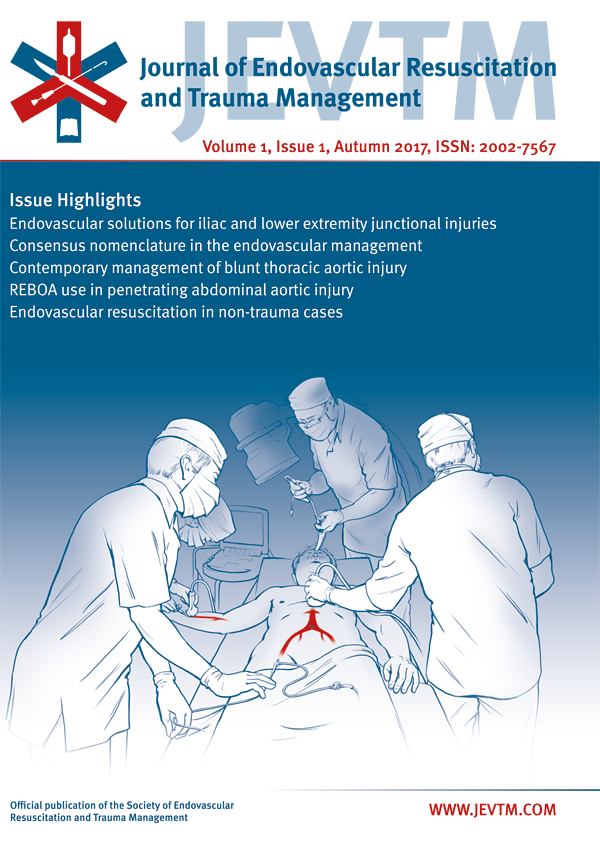Endovascular Resuscitation with Aortic Balloon Occlusion in Non-Trauma Cases: First use of ER-REBOA in Europe
DOI:
https://doi.org/10.26676/jevtm.v1i1.18Keywords:
REBOA, Hemorrhage, Hemorrhagic Shock, Endovascular ResuscitationAbstract
Background: Resuscitative endovascular balloon occlusion of the aorta (REBOA) is currently evolving and being used worldwide for trauma management. Smaller sheath devices for REBOA and new advances in endovascular resuscitation methods suggest the potential for the procedure to be utilized in hemodynamically unstable non-traumatic patients.
Methods: We describe five adult patients that underwent hemodynamic control using the 7 Fr sheath ER-REBOA™ catheters for non-traumatic hemorrhagic instability at Örebro University Hospital between February 2017 and June 2017.
Results: The ER-REBOA™ catheter was inserted and used successfully for temporary blood pressure stabilization as part of an endovascular resuscitation process.
Conclusion: The ER-REBOA™ catheter for endovascular resuscitation may be an additional method for temporary hemodynamic stabilization in the treatment of non-traumatic patients. Furthermore, the ER-REBOA™ catheter may be a potential addition to advanced cardiac life support in the management of non-traumatic cardiac arrest.
Published
How to Cite
Issue
Section
License
Copyright (c) 2017 Journal of Endovascular Resuscitation and Trauma Management

This work is licensed under a Creative Commons Attribution 4.0 International License.
Authors of content published in the JEVTM retain the copyright to their works.
Articles in the JEVTM are published under the terms of a Creative Commons CC BY 4.0 license, which permits use, downloading, distribution, linking to and reproduction in any medium, provided the original work is properly cited.




